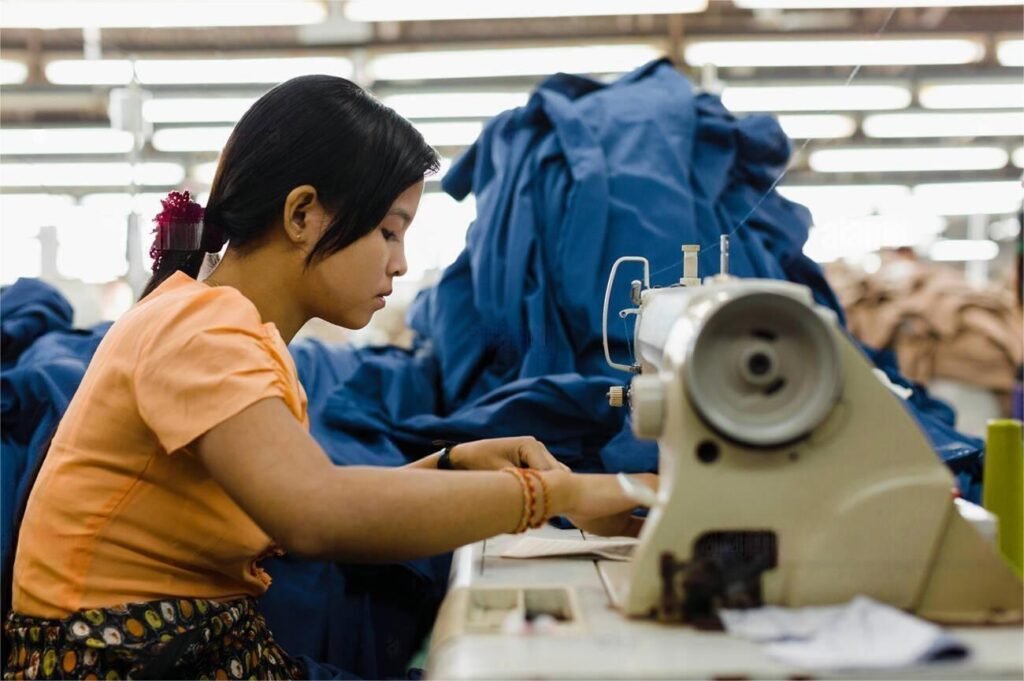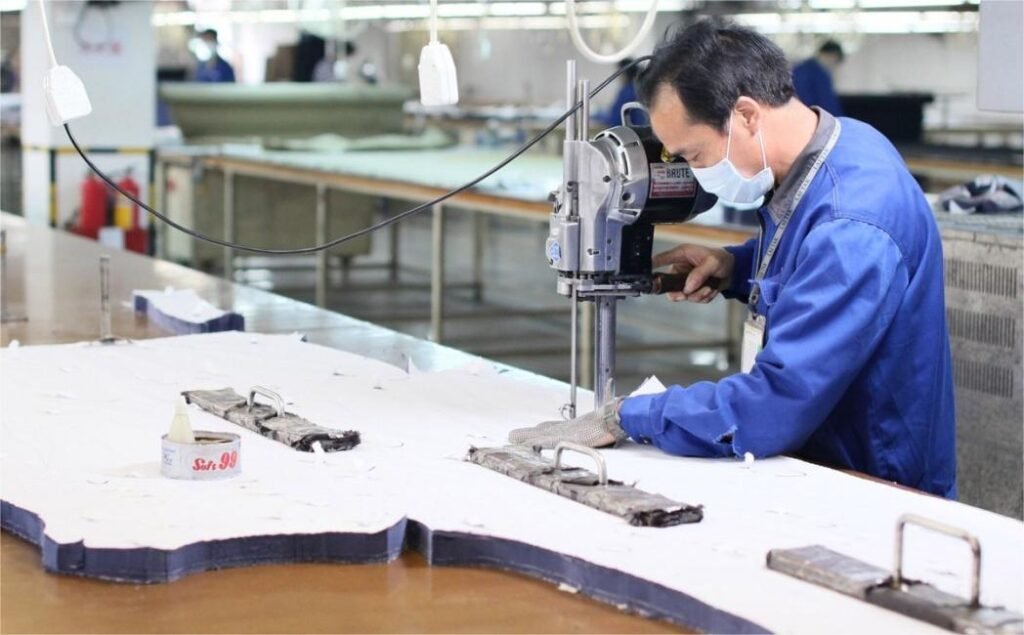No products in the cart.
Custom Yoga Pants
Dancewear Suppliers: High-Quality, Stylish Apparel for Dancers and Dance Studios
Introduction to Dancewear Suppliers: High-Quality, Stylish Apparel for Dancers and Dance Studios
Dance is not just an art form; it is a way of life for many individuals. Whether you are a professional dancer or a dance enthusiast, having the right dancewear is essential to enhance your performance and express your unique style. Dancewear suppliers play a crucial role in providing dancers and dance studios with high-quality, stylish apparel that meets their specific needs. In this article, we will explore the importance of choosing the right dancewear supplier, the top trends in dancewear, sizing and measurement tips, different dancewear styles, age-specific dancewear, dancewear accessories, dance studio essentials, customizing options, dancewear maintenance, and how to choose the right dancewear supplier for your studio or team.

The Importance of Choosing the Right Dancewear Supplier
When it comes to dancewear, quality and style are of utmost importance. Dancewear suppliers who prioritize these aspects can significantly impact the performance and confidence of dancers. High-quality dancewear is designed to withstand the rigorous movements and demands of various dance styles, ensuring durability and longevity. Additionally, well-designed dancewear enhances the overall aesthetic appeal, allowing dancers to feel confident and comfortable while performing.
Choosing the right dancewear supplier also ensures that dancers have access to a wide range of options that cater to their specific needs. Whether it is ballet, contemporary, hip hop, or any other dance style, a reputable dancewear supplier will offer a diverse selection of apparel that meets the requirements of different genres. This allows dancers to find the perfect outfit that not only fits their body type but also complements their personal style and artistic expression.
Top Trends in Dancewear: What’s In and What’s Out
Dancewear, like any other fashion industry, experiences trends that come and go. Staying up-to-date with the latest trends in dancewear can help dancers and dance studios make informed choices when selecting their apparel. Currently, there is a shift towards more versatile and functional dancewear that allows for ease of movement and comfort. This includes seamless designs, moisture-wicking fabrics, and innovative features such as built-in support and adjustable straps.
In terms of style, bold and vibrant colors are making a comeback, replacing the traditional black and neutral tones. Metallic accents, mesh panels, and cut-out details are also popular choices for adding a touch of glamour to dancewear. On the other hand, outdated trends such as excessive ruffles, overly embellished costumes, and restrictive designs are being phased out in favor of more minimalist and practical options.
Finding the Perfect Fit: Sizing and Measurement Tips for Dancewear
One of the most crucial aspects of dancewear is finding the perfect fit. Ill-fitting dancewear can hinder movement, cause discomfort, and even lead to injuries. Therefore, it is essential to understand the sizing and measurement guidelines provided by dancewear suppliers. Most suppliers offer detailed size charts that take into account various body measurements such as bust, waist, hips, and inseam length.
When measuring for dancewear, it is important to use a flexible measuring tape and follow the supplier’s instructions precisely. Taking accurate measurements ensures that dancers can select the appropriate size that provides a snug yet comfortable fit. It is also worth noting that dancewear sizes may differ from regular clothing sizes, so it is advisable to refer to the supplier’s specific size chart rather than assuming the same size as everyday clothing.
Exploring Different Dancewear Styles: From Ballet to Hip Hop
Dancewear comes in a variety of styles to cater to the unique requirements of different dance genres. Let’s take a closer look at some popular dancewear styles:
1. Ballet: Ballet dancewear typically consists of leotards, tights, ballet skirts, and ballet shoes. Leotards are available in various designs, including camisole, tank, and long-sleeved options. Tights are usually footed or convertible, allowing dancers to wear them with or without ballet shoes.
2. Contemporary: Contemporary dancewear often features more fluid and relaxed silhouettes. It includes leotards, unitards, leggings, and tops in breathable fabrics that allow for freedom of movement. Layering options such as crop tops, shrugs, and leg warmers are also popular in contemporary dancewear.
3. Hip Hop: Hip hop dancewear is known for its urban and street-inspired style. Baggy pants, oversized t-shirts, hoodies, and sneakers are common choices for hip hop dancers. Accessories like hats, bandanas, and chains are often used to complete the hip hop look.
4. Jazz: Jazz dancewear combines elements of ballet and contemporary styles. It includes leotards, jazz pants, leggings, and tops in vibrant colors and bold patterns. Jazz shoes with flexible soles are essential for executing intricate footwork.
Dancewear for Different Age Groups: Catering to Kids, Teens, and Adults
Dancewear suppliers understand that dancers come in all ages and sizes. They offer a wide range of options specifically designed for kids, teens, and adults. Dancewear for kids often features playful designs, bright colors, and comfortable fabrics to encourage their enthusiasm for dance. Teenagers have a diverse range of dancewear options that cater to their evolving style preferences. Adult dancers can choose from a variety of sophisticated and elegant dancewear styles that flatter their bodies while providing the necessary support and comfort.

Dancewear Accessories: Enhancing Performance and Style
Dancewear accessories are essential for enhancing both performance and style. They can add flair to a dancer’s outfit while also serving practical purposes. Some popular dancewear accessories include:
1. Dance shoes: Different dance styles require specific shoes, such as ballet slippers, pointe shoes, jazz shoes, tap shoes, and hip hop sneakers. Investing in high-quality dance shoes ensures proper support and protection for the feet.
2. Leg warmers: Leg warmers are not only fashionable but also help keep the muscles warm and prevent injuries during warm-up exercises. They are available in various lengths and materials to suit different preferences.
3. Dance bags: Dance bags are designed to carry dancewear, shoes, and accessories conveniently. They often have separate compartments to keep items organized and protected.
4. Hair accessories: Hair accessories like headbands, hair ties, and bun covers are essential for keeping hair in place during intense dance routines. They add a touch of elegance and professionalism to a dancer’s appearance.
Dance Studio Essentials: Must-Have Dancewear for Instructors and Students
Dance studios require specific dancewear essentials to ensure a professional and cohesive look among instructors and students. These essentials may include studio-branded leotards, tights, and warm-up attire that reflect the studio’s identity. Instructors often wear dancewear that allows for ease of movement while maintaining a polished appearance. Students may be required to wear specific dancewear styles and colors to create a uniform look during performances or competitions. Dance studio essentials can be customized to suit the studio’s branding and aesthetic preferences.
Customizing Dancewear: Personalized Options for Individual Expression
Dancewear suppliers understand that dancers want to express their individuality and personal style through their attire. Many suppliers offer customization options that allow dancers to personalize their dancewear. This can include adding names, initials, or logos to leotards, jackets, or bags. Customization options also extend to choosing specific colors, fabrics, and embellishments to create unique and one-of-a-kind dancewear pieces. Personalized dancewear not only enhances a dancer’s sense of identity but also fosters a sense of belonging within a team or studio.
Dancewear Maintenance: Tips for Keeping Your Apparel in Top Shape
Proper maintenance is crucial for extending the lifespan of dancewear and ensuring it remains in top shape. Dancewear suppliers often provide care instructions that should be followed to preserve the quality and appearance of the apparel. Some general tips for dancewear maintenance include:
1. Washing: Dancewear should be washed according to the supplier’s instructions. Most dancewear requires gentle hand washing or machine washing on a delicate cycle. Using a mild detergent and avoiding harsh chemicals or bleach is essential to prevent damage to the fabric.
2. Drying: Dancewear should be air-dried or tumble-dried on a low heat setting. High heat can cause shrinkage or damage to the fabric. It is advisable to avoid hanging dancewear in direct sunlight as it may cause fading or discoloration.
3. Storage: Dancewear should be stored in a clean and dry environment to prevent mold or mildew growth. It is recommended to fold dancewear neatly and store it in a drawer or closet. Hanging dancewear for extended periods can cause stretching or distortion of the fabric.
Choosing the Right Dancewear Supplier for Your Studio or Team
Selecting the right dancewear supplier for your studio or team is a crucial decision that can significantly impact the overall dance experience. When choosing a supplier, consider the following factors:
1. Quality: Ensure that the supplier offers high-quality dancewear that is durable and designed to withstand the demands of various dance styles.
2. Variety: Look for a supplier that offers a wide range of dancewear styles, sizes, and colors to cater to the diverse needs of your dancers.
3. Customization options: If personalization is important to your studio or team, choose a supplier that offers customization options to create a unique and cohesive look.
4. Reputation: Research the supplier’s reputation by reading customer reviews and testimonials. A reputable supplier will have positive feedback and a track record of delivering quality products and excellent customer service.
5. Pricing: Consider the pricing of the dancewear and ensure it aligns with your budget. However, prioritize quality over price to ensure the longevity and performance of the apparel.

Conclusion: Elevate Your Dance Experience with High-Quality, Stylish Dancewear
Dancewear suppliers play a vital role in providing dancers and dance studios with high-quality, stylish apparel that enhances performance and style. By choosing the right dancewear supplier, dancers can access a wide range of options that cater to their specific needs, whether it is ballet, contemporary, hip hop, or any other dance style. Sizing and measurement tips ensure a perfect fit, while different dancewear styles cater to the unique requirements of various genres. Dancewear for different age groups allows dancers of all ages to express themselves, while accessories enhance performance and style. Dance studio essentials and customization options create a cohesive and professional look, and proper maintenance ensures the longevity of dancewear. By carefully selecting the right dancewear supplier, dancers and dance studios can elevate their dance experience and express their unique style with high-quality, stylish dancewear.
